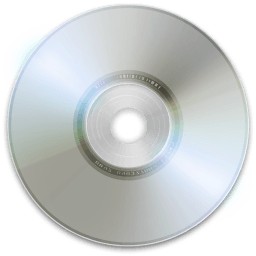- Qualcomm Launches Snapdragon 4 Gen 2 Mobile Platform
- AMD Launches Ryzen PRO 7000 Series Mobile & Desktop Platform
- Intel Launches Sleek Single-Slot Arc Pro A60 Workstation Graphics Card
- NVIDIA Announces Latest Ada Lovelace Additions: GeForce RTX 4060 Ti & RTX 4060
- Maxon Redshift With AMD Radeon GPU Rendering Support Now Available
Audio Archiving Guide: Part 2 – CD Ripping

In the first part to this series, we took a deep look at the various music formats available, while here, we’ll tackle the actual ripping process. Believe it or not, some methods are better than others, and we’ll explain why. We’ll also discuss specific rippers for Windows, Mac and Linux, so no matter your OS choice, we have you covered.
Page 1 – Introduction
Many listeners consider CD ripping to be a rather simple process, and for the most part, it is. The discs go in, your software performs a little magic, and your songs are copied to the hard drive. Of course, most people don’t put a lot of effort into ripping, and as a consequence, some of your music may transfer poorly.
Just because the music on a CD is in digital form doesn’t necessarily mean your rips are perfect. Chances are, if you have ever tried to rip a scratched or dirty CD, you’ve encountered skips or pops that generally characterize a bad rip, which means either living with the imperfections, or taking time out to look for the right album and have another go.
In other cases, if you’re trying to copy an album you’ve abused for a few years, you have probably noticed that your software has trouble reading the disc correctly, but there is a way to avoid paying for music you already own or taking the morally questionable route. If you use the programs and follow the steps outlined in this article, hopefully, you will have your cherished music perfectly captured in digital form.
Secure Ripping
Most ripping programs and music jukeboxes, like iTunes, Zune, Songbird, and Winamp, just to name a few, use the same technique for ripping audio CDs by default, usually referred to as “fast ripping” (or burst). This procedure simply reads the disc once, and copies the information to your hard drive, without bothering to check for any hidden errors. This is sometimes the required choice for copy protected audio discs.

Secure rippers do just as the name suggests. Programs like Exact Audio Copy, dBpoweramp, CDex, Max and Rubyripper all use some form of validation that tests to make sure the data copied is relatively accurate. However, there are some factors to be aware of.
Although it may sound as if it’s the best option for everyone, secure ripping does have its own hindrances that may or may not affect you. The obvious prerequisite is the software: if you are not already using a secure ripper, you will have to adjust your workflow accordingly. If you’re using iTunes, for example, an album would have to be ripped with dBpoweramp, and imported into your library manually, which may be tiresome if you have many discs to sort through.
The second hurdle is the time required. The time necessary to rip a CD will dramatically increase depending on the software, how fast your computer can process the information, and the condition of the CD. What could take a few seconds to a handful of minutes with a regular program may take upwards of 10 minutes or longer if your drive has trouble reading the disc.
Finally, your success is dependent on the hardware utilized. Some drives, for example, have better luck reading C2 data that some programs, such as EAC, use. Other drives may provide inaccurate results or not support the feature at all, which could result in more work down the line if your hardware isn’t checked to work before hand.
How Secure Ripping Works
Secure rippers tend to come in two flavors, with each having their own subsets and interpretations, but all of them ultimately serve to achieve the same purpose. There is a debate about which method works best, but ultimately, it is your decision to make depending primarily on what drive you use, and whether or not you’re willing to pay.
The first category is error detection. Programs utilize various technologies, including C2 error pointers which will tell the software when an error has been read, if the drive properly supports it. Accurate Stream, which is supported by most modern drives, provides a constant value for drive offsets, allowing the drive to precisely locate a specific section of a CD.
To put it simply, if the application detects a scratch on the disc, which would be assumed by a hash mismatch, then it will continue to re-rip the same bits over and over until it’s able to deliver a confident result. If errors still exist after ripping, the application will usually let you know, and from there, the only way to judge whether or not you need to proceed further would be to perform a listening test.
The other category is a technology dBpoweramp primarily employed (but recent upgrades have added the capability in another popular program), which Illustrate calls “AccurateRip.” This feature keeps a database of all CDs ripped. When you use the the ripper to copy the music to your hard drive, information about your computer’s drive and the results from the rip are uploaded to Illustrate’s servers, which they then use to compare to other people’s.
If your results match, your rip is deemed accurate, thus avoiding the need to involve the slower secure mechanisms, but if your rip is deemed inaccurate, you still have the option to go back and try again, using a combination of the above methods. AccurateRip isn’t perfect, but it’s a fantastic addition to two already great rippers.
Support our efforts! With ad revenue at an all-time low for written websites, we're relying more than ever on reader support to help us continue putting so much effort into this type of content. You can support us by becoming a Patron, or by using our Amazon shopping affiliate links listed through our articles. Thanks for your support!




